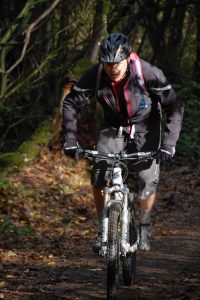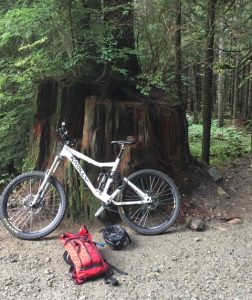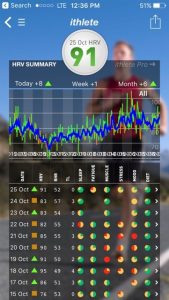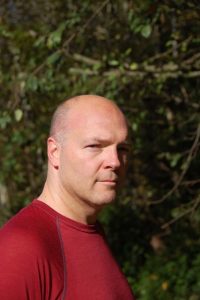 Imagine cool mountain air. Then the warmth of a humid forest. Climbing upward along a winding dirt and gravel road in the trees, the forest to yourself. Leaves rustling. A stream sings nearby as the path winds higher. Birds signal your presence and theirs. Senses heightened as you experience what it is to be at one with the forest. The mountain. Nature.
Imagine cool mountain air. Then the warmth of a humid forest. Climbing upward along a winding dirt and gravel road in the trees, the forest to yourself. Leaves rustling. A stream sings nearby as the path winds higher. Birds signal your presence and theirs. Senses heightened as you experience what it is to be at one with the forest. The mountain. Nature.
Here on the Sea to Sky from Vancouver to Whistler when they ask what you do, it’s not about your occupation, it’s what sport, what outdoor adventure, what challenge on the mountain or in the forest do you engage in. In my case I split the year between the mountain bike and downhill skis. The proverbial weekend warrior.
To prepare myself for these undertakings I return to the weight room in the fall to do circuit style training and pieces on the rowing ergometer. This training adds mass and strength for the ski season while building a base of strength for the riding season to come.
As spring approaches, I leave the weights and ergometer behind moving back to the bike. I shed the mass I added in the fall as I develop the aerobic prowess to climb that road and any other trails in the region.
The climb while daunting early in the season pales in comparison to the aggressive and challenging descent that follows. All the training over the winter pays dividends at the top when the armour is adorned, the seat lowered and the suspension is opened up.
My journey to ithlete was in an effort to master this climb and be fresh for the descent that followed. To improve as I got older. To expand on the base I had built for my recovery. Recovery from treatment for cancer.
As my ski season training began three years ago I was receiving an unexpected preliminary diagnosis: Hodgkin’s Lymphoma. I spent the two months leading up to treatment for this ailment developing a training and nutrition strategy to add mass and maintain fitness into the treatment period.
The idea was to train through treatment to maintain as much fitness and mass for as long as possible; so that I would have something to work with when I finished. A base to build on when the treatments were completed and recovery was embraced.
 The strategy turned out to be a good one. I exited treatment at about the same weight as I entered. I was in rough shape by my standards but that seemed to pass quickly as I moved from ski season training back to the bike. Shorter r
The strategy turned out to be a good one. I exited treatment at about the same weight as I entered. I was in rough shape by my standards but that seemed to pass quickly as I moved from ski season training back to the bike. Shorter r
oad rides on the mountain bike showed relatively rapid improvement. I was eventually able to reach the underlying fitness I had developed and maintained but that had been difficult to reach and utilize as my treatment was reaching its conclusion.
At the end of 2014, seven months after my recovery began, I felt as if I had recovered but had more upside to come. All of my physical metrics had normalized and I had even achieved a big mountain ride in record time four months after recovery began. A ride that I did not know if I would ever be able to complete again as the situation was unfolding.
Picture a large tree stump marking the rest stop for riders after the long climb at 7th Secret. A sign and a short steep rocky descent just over to the right. A winding single track laden with switchbacks, ladder bridges of varying width. Punchy climbs. Steep relentless ladders like the game board to challenge your mind when tired. A rock drop. Fifty five minutes of pure joy.
In 2015 I was looking for ways to build on the successful recovery, and determine if I had more fitness to come. To be faster and stronger on that ride. It was here that ithlete and Maffetone training provided guidance.
Maffetone encouraged slowing things down. Sisson emphasizes doing less to achieve more. Ithlete’s HRV program helped me see how this works.
Early in the riding season, my training road rides during the week were reduced to two, and the intensity was reduced materially. These twenty mile rides are done with an all mountain full suspension bike including downhill tires, in other words reasonably challenging even at a reduced pace.
The easier rides were accompanied by extensive walking on the same day and in between. This active rest allowed for additional recovery between significant efforts. The demanding mountain rides were every six to seven days around these easy rides. What I call big mountain efforts are often two to two and a half hours in duration, sometimes longer. Due to the nature of the mountains here, most of this time is almost all out both up and down.
The descent alone is a demanding heart max out experience, even when you are very fit. The morning of this ride often displays amber on ithlete and sometimes green. I attribute that to a little less sleep and a lot of visualization of the various trail features I want to master the night before.
The day after these rides are surprisingly often green, demonstrating that training stress is valuable; however I never ride the day after because I have discovered if I do the result is I am more tired as the week progresses.
The first easy recovery ride is two days after a big ride. The second easy ride is two to three days after the first where I am typically feeling more rested and scores are improved. By doing the second ride two days before the next big one, my nervous system seems primed for the next demanding effort.
I have learned this process through trial and error using ithlete.
In the event I have additional personal stress, poor sleep or increase my big ride frequency, I will get more amber readings and an occasional red. Red I never ignore. That means rest period. Amber when I am tired or feel a bit off is also a signal to rest.
The rare time I develop a cold or sinus infection, the scores fall along with a move from amber to red. Some rest and these seem to bounce back relatively quickly.
 My observations over the last year seems to demonstrate that in my case the HRV trend is highly seasonal. It peaks in August/September along with peak aerobic fitness and seems to decline through to a low near the end of the year. Perhaps it follows the amount of daylight in part. Or maybe it is a move from a more aerobic training approach on the bike to twenty minute circuit and rowing sessions. As the year begins the scores rise progressively and when I begin riding again they build once again to a peak.
My observations over the last year seems to demonstrate that in my case the HRV trend is highly seasonal. It peaks in August/September along with peak aerobic fitness and seems to decline through to a low near the end of the year. Perhaps it follows the amount of daylight in part. Or maybe it is a move from a more aerobic training approach on the bike to twenty minute circuit and rowing sessions. As the year begins the scores rise progressively and when I begin riding again they build once again to a peak.
Using the do less, emphasis on easier and periodic all out efforts I was able to reduce my best time on my favorite route starting at 7th Secret from a personal best of two hours twenty minutes in 2014 to two hours flat in 2015. A material improvement demonstrating the efficacy of training for my recovery and the effectiveness of HRV as a tool to understand where training can be used to improve performance. It also demonstrates what was possible when I was released from the nascent grip of lymphoma.
As I entered treatment I was looking for a return to even with an outside hope of more than I went in with. In 2015 my outside hope was realized.
For 2016 I began the riding season using the Maffetone 180 MAF method. My resting HR dropped a few points. My weight came down a little more easily and fat adaption seemed even better. I felt stronger and fitter by starting the season this way and using the same basic structure as last year.
What I discovered was that after about eight weeks of MAF I should have started adding training stress through periodic short aggressive climbs. By doing MAF longer as I waited for some equipment to be warrantied I delayed my preparation for the climb up to 7th Secret. Clearly the stress is needed to enhance adaptation for my demanding rides early in the season and needed earlier than anticipated.
The season has been a good one. Slightly lower weight and some additional aerobic prowess has meant consistently fast times, the ability to manage more trail challenges that were previously considered daunting and great recovery between efforts.
As the 2016 riding season drew to a close, it has become clear that I need more training stress at the end of the season as well. HRV helps me to see this as my scores begin to moderate even with my fitness near its peak.
My scores and fitness improve rapidly as stress is added, but as long as it isn’t too much too frequently. As my fitness and HRV scores peak out in the late summer period, it has become clear that the scores will drift without the addition of more training stress periodically. I feel very fit, but that also means that many of the things I’m doing also seem somewhat easier.
I have wondered whether HRV would have been useful during my treatment. Through that period I discovered using a simple standing heart rate an hour before I was considering training helped to determine when I could train and how hard. The reason this was effective is due to the impact of chemotherapy drugs on bone marrow and its production of blood components. Your resting heart rate will vary dramatically and with it your ability to breath and function under load.
Considering the massive stresses of treatment, I am not sure whether HRV would have been beneficial in that specific situation. However, during the recovery period, particularly early on, I think it could have assisted me with the recovery trajectory. It would have helped me to avoid any potential overtraining during the early part of my recovery when I was chomping at the bit to get going.
This is an amazing time to be an athlete, especially an aging recreational one. At forty seven I continue to look for ways to improve both my riding and skiing. Age around here is a number and it is not uncommon to see incredibly fit seniors demonstrate extraordinary capability and capacity in a variety of endeavors.
Having a tool that allows me to understand the implications of my activity, both the need for rest and when to add training stress means that I will be able to shape my future accordingly.
The trail narrows as a crossroad appears to the left and the entry fee is rock drop with three different options. The most intimidating, right down the middle is the best route. Challenging but clean.
Slowing to the lip then letting the brakes go. Head pulled back and up while arms are extended pushing the bars forward and down. The body moves back behind the seat for a moment, the rear of the bike compresses into the void and the fork eats up the impact as the front wheel drops below.
The body is tired. The finish is close.
The bike moves ahead to the left as momentum is used to clear some small rocky steps, then to the left again where some roots and rocks await. I have crashed here once before destroying a seat…..nailed it this time.
Then the switchbacks, one after the other, very tight, a bit off camber, short, steep, messy. Its stop and start at times. Then the features become tamer as the trail moves to loam then back to dirt path.
It is here, as the ride reaches its conclusion that the forest, the mountain and the man are one.
About Tristram
 Tristram is the author of Training for Recovery: Finding Opportunity in a Cancer Diagnosis. A story about his experience and approach to a cancer diagnosis, treatment and subsequent recovery using mental, physical and nutritional strategies to train through treatment and build a foundation for the future.
Tristram is the author of Training for Recovery: Finding Opportunity in a Cancer Diagnosis. A story about his experience and approach to a cancer diagnosis, treatment and subsequent recovery using mental, physical and nutritional strategies to train through treatment and build a foundation for the future.
This story was written to inform and inspire. To lift up others in their time of need. To show that one can rise to the occasion with dignity and determination.
Tristram is a mountain biker, skier and a former trader located on the west coast of Canada. With a wide range of interests, he is one of life’s humble students.
